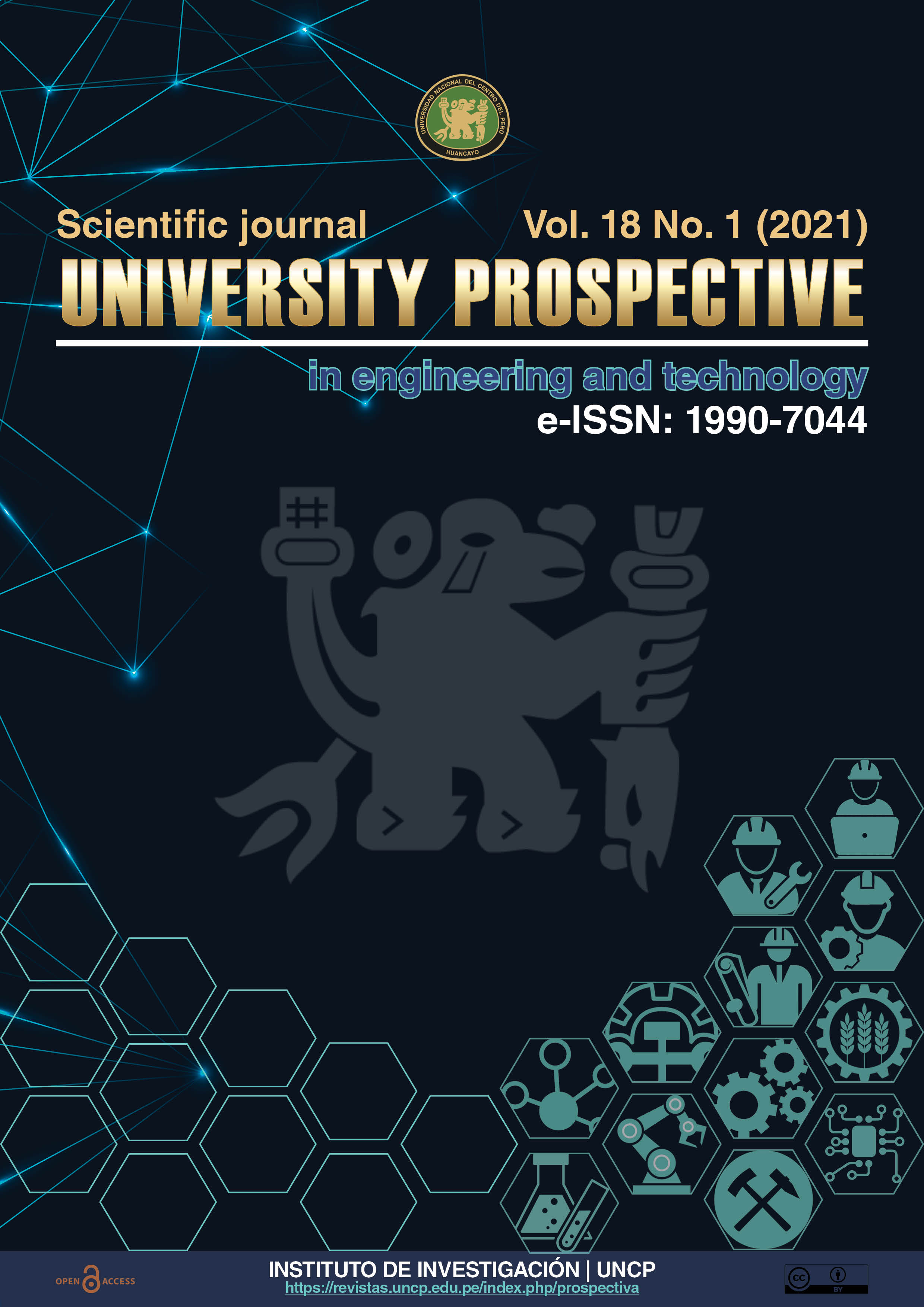Kolb's experiential learning in students of the Faculty of Metallurgical and Materials Engineering of the National University of the Center of Peru
DOI:
https://doi.org/10.26490/uncp.prospectivauniversitaria.2021.18.1634Keywords:
Experiential learning, Learning styles, Cognitive functions, Learning modalities, University studentAbstract
The objective was to determine learning styles based on Kolb's (1984) experiential learning, which correspond to four loops of cognitive functions: active student or divergence, reflective or assimilator, theoretical or convergence and practitioner or accommodated; as well as relationship of their learning modes. This article deals with the study of 103 students from the Faculty of Metallurgical and Material Engineering of the National University of the Center of Peru. The results show that the student presents different forms of learning styles; so instead of trying to understand and assimilate information, you must be able to make sense of what you have experienced and develop knowledge that is useful to you. It is concluded that the predominant learning style in students is the divergent one, and the least predominance, the assimilator, those are familiar with the fields of abstraction and the observation of reflection; understanding and creating theoretical models is one of their greatest strengths, they are usually more interested in ideas. People who work in mathematics or basic science tend to adopt this learning style. Assimilators also enjoy the work, including planning and research. Likewise, the learning modality of concrete experience correlates with the learning mode of active experimentation with a negative correlation of -0.77; which implies that while one of the modalities increases, the other decreases.
Downloads
References
Cohen, J. (1988). Análisis de poder estadístico para el comportamiento. Ciencias Violentas (2a ed.). Hillsdale, Nueva Jersey: Erlbaum. doi:10.4324 /9780203771587
Curry, L. (1999). Estilos cognitivos y de aprendizaje en la educación médica. Medicina académica.
De Abreu, J. A.; Da Silva Mendes, J.; De Oliveira, M. E.; De Queiroz Ferreira Da Cruz, T. V. & Brandão, W. A. (2020). Como aprendem os estudantes e professores de uma instituição de ensino superior: aplicação do inventário de estilos de aprendizagem de kolb (1984). How students and teachers from a higher education institution learn: application of kolb’s learning styles inventory (1984)., 9(2), 114-125. Busines Source Index.
Delahoussaye, M. (2004). The perfect learner: An expert debate on learning styles. Training, 39(2), 28-36.
Dumas, L. (1995). Desarrollo y validación de un instrumento de evaluación formativa para el enfoque vivencial del saber-hacer-aprender del estudiante de enfermería en formación clínica. Tesis doctoral inédita, Universidad de Quebec en Montreal.
Dumas, L. (1995). Desarrollo y validación de un instrumento de evaluación formativa para el enfoque vivencial del saber-hacer-aprender del estudiante de enfermería en formación clínica. Tesis doctoral inédita,Universidad de Quebec en Montreal.
Hayden, S. C. W. & Osborn, D. S. (2020). Using experiential learning theory to train career practitioners. Journal of Employment Counseling, 57(1), 2–13. doi:10.1002/joec.12134
Kayes, D. C. (2005). Internal validity and reliability of kolb’s learning style inventory. Version 3 (1999). Revista de Negocios y Psicología, 20 (2), 249–257. doi: 10.1007 / s10869-005-8262-4
Knapp, D. & Benton, G. M. (2006). Episodic and semantic memories of a residential environmental program. Environmental Education Research, 12, 165–177. doi:10 .1080/13504620600688906
Kolb, A. & Kolb, D. A. (2012). Kolb's learning styles. En: Seel NM (eds) Enciclopedia de las Ciencias del Aprendizaje. Springer, Boston, MA
Kolb, A. Y. & Kolb, D. A. (2005). Learning styles and learning spaces: Enhancing experiential learning in higher education. Academy of Management Learning & Education, 4, 193-212. http://dx.doi.org/10.5465/AMLE.2005.17268566
Downloads
Published
Issue
Section
License
Copyright (c) 2021 Elías Chaccha Tinoco

This work is licensed under a Creative Commons Attribution-NonCommercial-ShareAlike 4.0 International License.
Esta Revista es de acceso abierto a su contenido a través del Internet, poniendo a disposición de la comunidad científica los resultados de la investigación, de manera gratuita, para el intercambio del conocimiento desarrollado.
El contenidos de la Revista se distribuyen bajo la licencia Creative Commons Reconocimiento-NoComercial-CompartirIgual 4.0 Internacional.
![IconJournalPU [ENG] by Edgar Julian-Laime®](https://revistas.uncp.edu.pe/public/journals/1/pageHeaderLogoImage_en.png)









